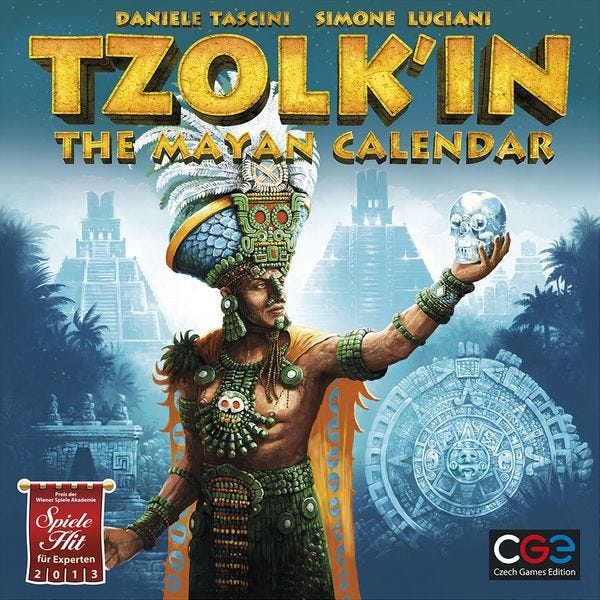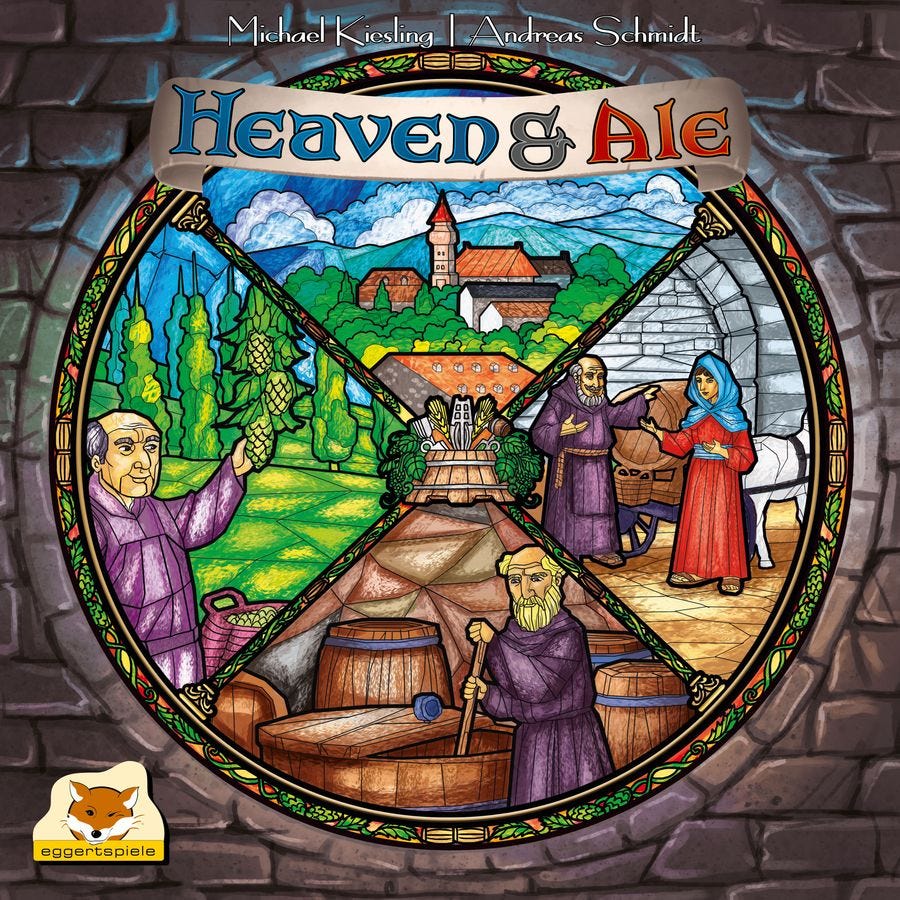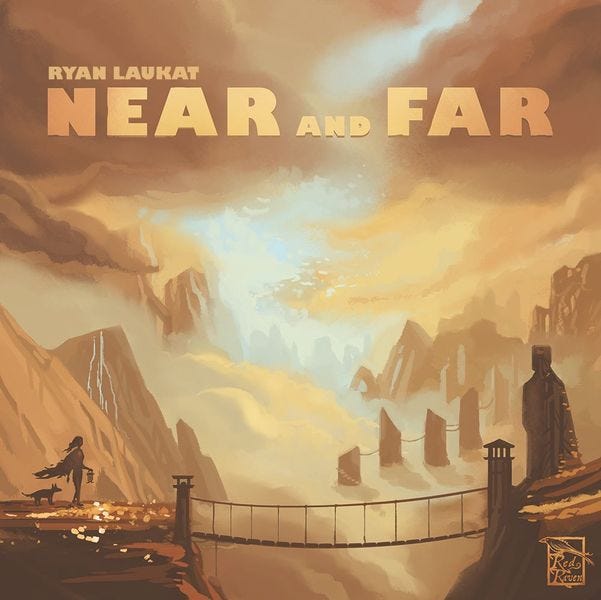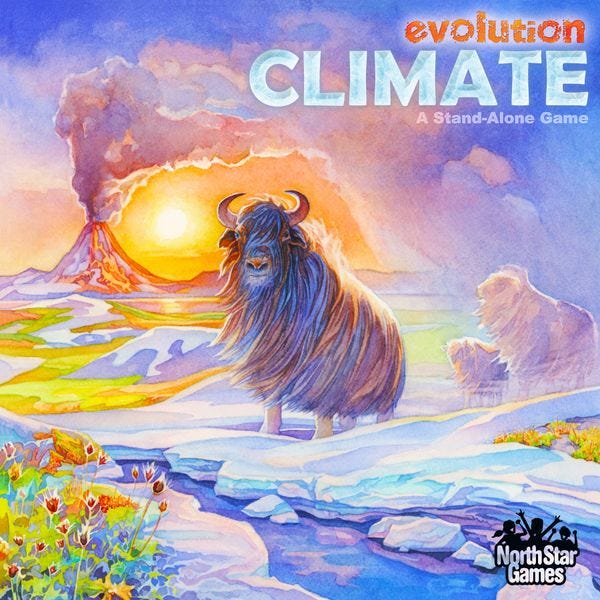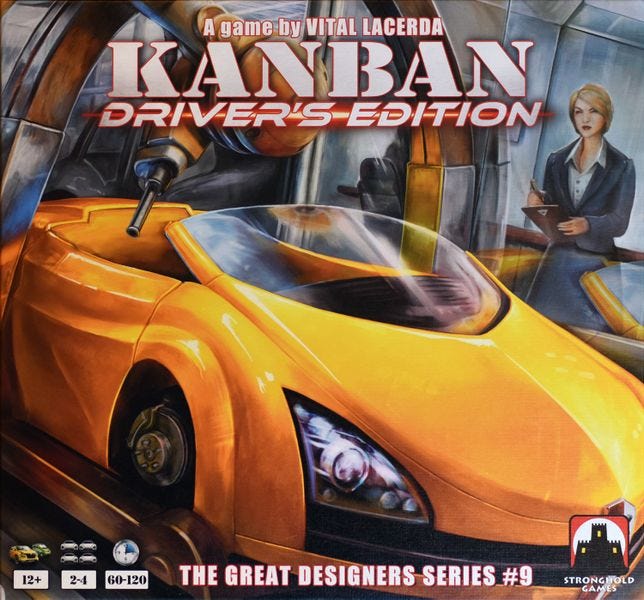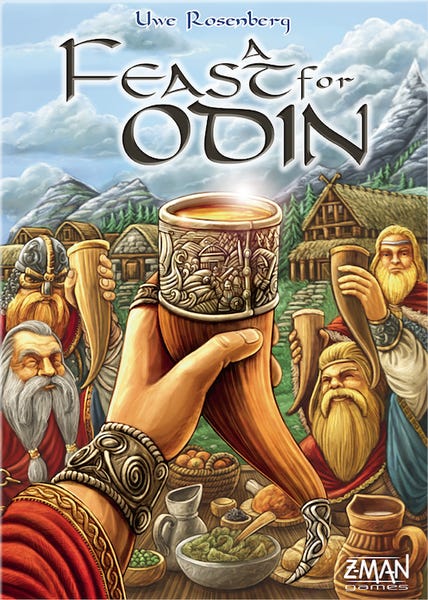I am shocked at how low some of these games are, because I love every single game here so much. Some of them I have played out a little bit and some I just haven’t had the right setting. But if you asked me right now to play these games, I’d probably say yes. Unless someone offered a game coming later this week, of course.
40. Tzolk'in: The Mayan Calendar
Players: 2-4 (best 4)
Time: 90 mins
BGG Weight: 3.67
The marquee title in Italian designer Daniele Tascini’s T-series, it was one of the first games to popularize worker retrieval, when you take your worker back really matters in this game. Players pay corn to place workers on the lowest open spot of one of the gears, which are moved by a center gears that turns all of them. As the gears turn, the rewards get more valuable.
When you pick up your workers, you can take as few or as many as you want. If you let them sit for too long, they are pushed off and get you nothing. Once the central gear completes one full rotation the game ends and whoever has done the most to please the gods wins.
Tzolk’in is not for the faint of heart. Euros often get criticized for limited player interaction, but here you’re encouraged to go directly after other players. You must keep your people alive, so resource management is paramount to success. And, to paraphrase the Wu-Tang Clan, Corn Rules Everything Around Me. Part of the appeal of this game is the tactile nature of it. A lot of games have cool pieces that are functionally irrelevant. Here, the game wouldn’t work without it.
This also holds a spot in our personal gaming history as it was one of the first games that hooked Adrianne in the world of heavy board gaming. She finally found a puzzle that she had to solve.
39. Heaven & Ale
Players: 2-4 (best 4)
Time: 1 hr-90 mins
BGG Weight: 3.19
Michael Kiesling is best known for Azul, but for my money this is his best game. It features a rondel, which is a mechanism I love but always racks my brain. It features a highest low score scoring condition, which requires you to pay attention to all your scoring tracks. The board has two different zones that give you different resources depending on where you play.
Players are leading a monastery as they seek to brew the best beer in the region. They have different monks at their disposal that are played to the board to generate resources used to improve their brewing process. There is a light and dark side of the board, you’ll balance improving your process with generating more resources. The whole process feels overwhelming the first time you play it, there is a steep learning curve here. The board is a little more interesting than similar euros, but art has come a long way even in the last seven years.
This feels like a game destined to be a lost gem, a lot of modern games don’t have the level of mechanism integration here and I see this game standing the test of time.
38. Spirit Island
Players: 1-4 (best 2)
Time: 90 mins-2 hrs
BGG Weight: 4.06
In 2011, Greater than Games put out a co-op card game with preconstructed decks called Sentinels of the Multiverse. The heroes and villains were deeply asymmetrical. The game play could be punishing, one of the only times I played it with Adrianne we lost on one of the first turns. Just bad luck. I ended up getting every expansion to the game, playing through it constantly with my friend Jamil. We played every hero, beat every villain, wore the game down.
I bought some of their other games, but none really grabbed me like Sentinels. I still have all of it boxed up. I haven’t played it in years, but I can’t bring myself to get rid of it. I own it digitally, but something about the physical game appeals to me too much to turn over to the digital adaptation.
So when Spirit Island came out with a hornet’s nest of buzz, I was a little skeptical. I wanted to love another GTG production, but would this be the one? Spoiler alert, it was! Spirit Island is an island defense game. Players take the role of different spirits seeking to ward off hostile invaders who want to settle your island. An excellent game with a strong anti-colonial message? Come on.
I played it a lot when it came out, but have not really played it since I got some of the expansions. Part of the pause was a deck of cards had gone missing. They have since been replaced and Adrianne is jonesing to start playing it. It might be time for it to come back out in full force and if it does, expect to see this rocket back up the rankings next year.
37. Race for the Galaxy
Players: 2-4 (best 2)
Time: 30 mins - 1 hr
BGG Weight: 2.99
I’ve played a lot of Tom Lehmann’s games but none of them compare to Race for the Galaxy. A space themed take on the tableau building of Puerto Rico, RftG thankfully doesn’t suffer from the questionable thematic choices of its inspiration. Players work to build their galactic civilization by colonizing or conquering planets and racing to hit the goal of planets settled. Then you tally up victory points and whoever built the best civ is now the winner.
The reasons to dislike the game are many. It has confusing iconography. The synchronous play can be tough for new players. The game has a massive skill gap that worsens with experience. Even when I dust it off after a long absence, I have to refamiliarize myself with how the game works.
Boy is it worth it. The game is fast, since actions only happen if someone chooses it from one of seven options. They always happen in the same order, and if every one chooses the same action, the round is over just like that. The game becomes a mad dash almost immediately, the sense of urgency making every turn feel important. I’ve never played the digital version, but I probably should.
36. Near and Far
Players: 2-4 (best 3)
Time: 90 mins - 2 hrs
BGG Weight: 2.89
This one is kind of bittersweet. Near and Far is a competitive campaign game set in the same world as Above and Below. I played about half a campaign with Adrianne and she decided that Sleeping Gods was more her speed. So far, Near and Far is it for me. The game took four or five plays before it really clicked. Once I got my head around the race to resources balanced with the story beats that get you special resources, I fell in love.
The game has two areas, a town where you recruit allies and build up for adventuring and then a map where you strike out on said adventure. There is a narrative that builds over play sessions and events that cascade into other events. It’s tempting to push on to those events, but if you don’t save enough energy you’ll never get the best rewards. You have to set up camps, build trade routes and develop a party that can handle any hazard you encounter along the way.
I am hopeful to find some people to run through this campaign and then to the even heavier Now or Never as I really liked this game. But for now, I’ll be content to wake the sleeping gods and get our crew back home.
35. Evolution: Climate
Players: 2-6 (best 4)
Time: 1 hr
BGG Weight: 2.75
Evolution has been a mainstay in our collection since it came out a decade ago. When we have 5 or 6 players, it is one of a few games that is always a crowd favorite. And for me too, having played it consistently for a decade. But two years in an expansion came out that really pushed the game to the next level.
Climate became mandatory. So much so that the company released a stand alone version of the game with it built in. The game has players creating new species of animals with a variety of traits and competing over a limited pool of food. Or by turning other animals into food. Climate introduces warming and cooling events that make certain animals more likely to survive, until it gets so harsh that no one is likely to.
Now players have to balance food supplies and potential predators with heat waves or cold snaps that could kill off their top performer. A bountiful season might mean carnivores are more prominent. A dwindling food supply might mean your small defensive creature doesn’t have enough body fat to survive. At higher player counts, the game recommends synchronous play and I concur.
At four or less, I probably prefer Oceans (the marine implementation of this game type) but the sheer versatility of Evolution means it wins out overall.
34. Kanban: Driver’s Edition
Players: 2-4 (best 3-4)
Time: 90 mins - 2 hrs
BGG Weight: 4.37
I haven’t play the EV version, which I’m told is far superior, but Kanban: Driver’s Edition is my favorite Lacerda so far. The moving boss is something he used to lesser effect in Weather Machine, but here it really forces you to plan ahead. This is a game that requires peak efficiency to win.
Players are running a car company, designing new automobiles, manufacturing them, testing them and selling them. Every action is interlaced with every other action and you must manage all of them to come out on top. The better you do, the more board seats you unlock when it comes time for a board meeting and that can have crucial ramifications on the game.
The best part about Lacerda games for me is that they are easy to understand and impossible to master. You can teach people to play, all the actions make sense thematically and mechanically. That’s a rare feat. The game is also just a lot of fun. I know I’m having a great time when I don’t care how I finish, only how much I improve. The game also really does only take about a half hour per player once you get familiar with the many moving parts.
The board is also clean and helps players understand how their actions impact others. This game got a ton of playtime last year, so it isn’t as high on my list but I still love it dearly.
33. A Feast For Odin
Players: 1-4 (best 3)
Time: 30 mins - 2 hrs
BGG Weight: 3.87
What’s the best Uwe Rosenberg game? Who can say? For the uninitiated, Rosenberg is arguably the greatest board game designer of all time. He has 5 games (Agricola shows up twice) in the top 100. He has genre defining games (the aforementioned Agricola) and mass market family weight success (the just outside the top 100 Patchwork).
For me, it is A Feast for Odin. The game puts you in charge of a Viking clan and you alone decide their path. Traders or raiders, farmers or forgers. You start out 86 points in the hole and have to claw your way to positive points. Food management is important, because there are many feasts and if you can’t feed everyone it puts you deeper in the hole.
Player boards are filled in by different resources that have specific placement rules. Covering up spaces eliminates those negative points and can generate more resources for you after every feast. You can claim islands or build buildings, but those come with their own drawbacks. One of the hardest parts of Odin is sticking to a path. The game dangles so many varied and fun paths to victory in front of you, but if you spread yourself thin you run the risk of another player honing in on a strategy and running away with the game.
If you stick too close to a strategy, though, other players can block you out of vital spaces. Worker placement spaces range from a cost of 1-4 workers, with the rewards growing compared to the number of workers. Rounds end after everyone has played all their workers. This was one of our most played games over the last two years, so I am a little burned out on it, but I won’t hesitate to introduce one of the best from one of the best.
32. Ethnos
Players: 2-6 (best 4)
Time: 45 mins - 1 hr
BGG Weight: 2.04
Ethnos takes the set collection of Ticket to Ride and combines it with the area majority of El Grande. Instead of train routes, six races of mythological creatures will be available to draft or draw from a deck until you reach your hand limit of ten. At any point, up to that hand limit, players can play a set of colors or one race and place a location marker in one of the territories on the board. At the end of each age, triggered by drawing the third dragon seeded in the deck, players will score each of the territories and whoever has the biggest stack in an area scores the points.
Each race changes the rules a little bit, from adding other tracks to modifying stack totals for scoring or placing. A lot of criticism has been levied for the production, which is underwhelming, but the game has endured in our friend group in large part because it plays so well at 6 players.
While I love both El Grande and Ticket to Ride, I adore how they come together here. The hand limit fixes one of the biggest issues with TtR and the area majority is more fun than the route blocking or longest route focus as well. The set collection is more fun to me than the action selection of El Grande.
Ethnos has recently been reworked as Archeos Society, but reviews indicate that the original is still the best.
31. Adventure Tactics
Players: 1-5 (best 3)
Time: 45-90 mins
BGG Weight: 2.58
I am a budget shopper when it comes to board games. I wait for a deal, most games will be 50% or less on the secondary market and I already have more games than I need. While variety is one of my favorite spices, I can find a game play loop and exist there for a long time. 5000 plays of digital Ascension should indicate that.
When I saw Tom Vasel talking about Adventure Tactics on the Dice Tower, I needed it. I bought it almost immediately. That hubris was rewarded with one of the best tactical RPGs in board game form ever. There’s really only one better in my opinion. Adventure Tactics rewards multiple playthroughs by way of an excellent job system.
After every mission, players are tasked with leveling up. You can choose to refine one class or work toward unlocking any of the excellent advanced classes. Once players finally max out their class, you’ll siege the titular tower and try to get the best ending possible. The aftermath of a mission is as fun as the game itself. Figuring out your build and what you want to work toward is so much fun.
Taking that new build out on your next mission is also a blast. The fights are well designed and challenge you to be strategic. Best of all, winning and losing just pushes the game forward. There’s no game over, only repercussions for your failure. Seeing how other people build out is also really neat and it gives you ideas of what you might want to do next time. If you love games like Final Fantasy Tactics, this is the co-op cardboard version and I can’t recommend it enough.
In case you missed it:




